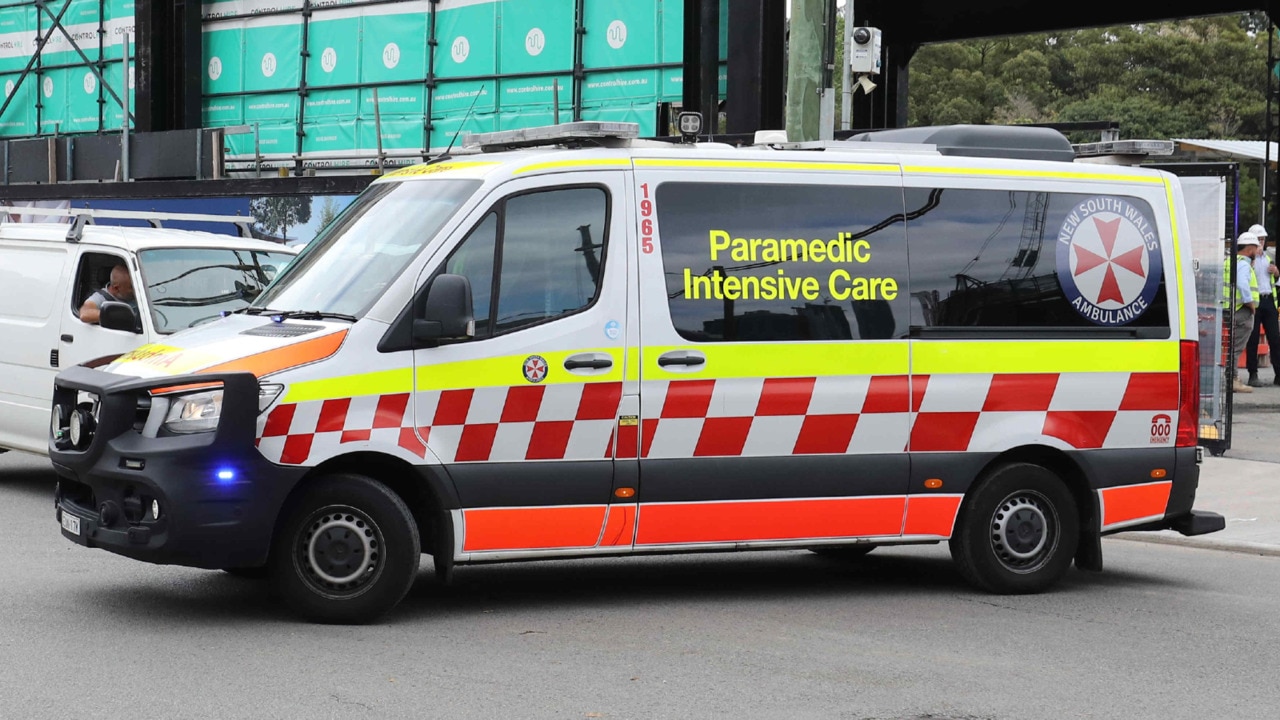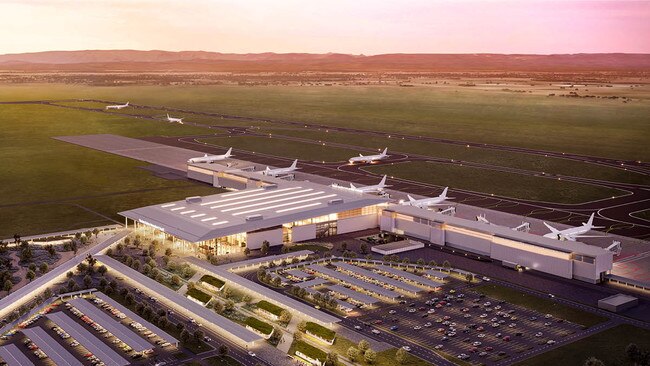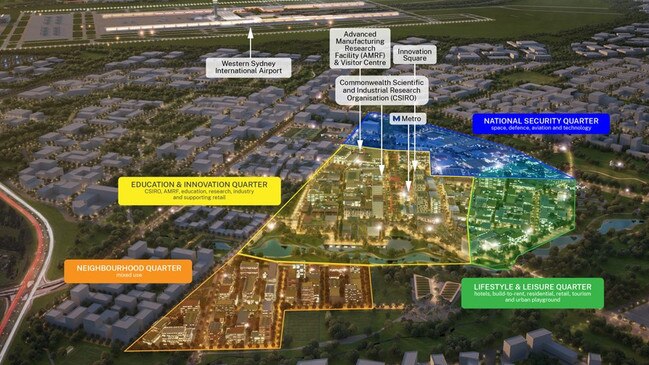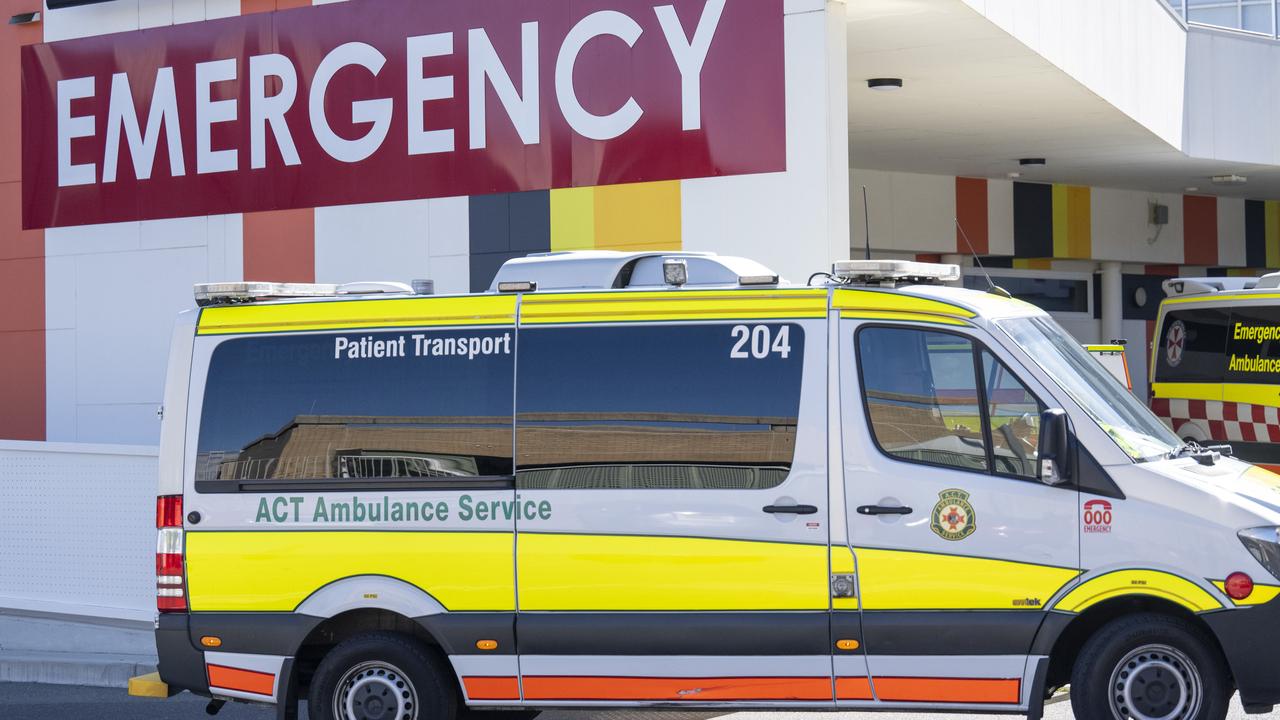Western Sydney Airport’s Aerotropolis precinct at risk over federal infrastructure cuts, says NSW Treasurer Daniel Mookhey
The NSW Treasurer has threatened a new precinct surrounding Sydney’s incoming second airport, imploring the Commonwealth to “return that money”.

A major development around Sydney’s incoming airport could be significantly reduced due to a cut in federal infrastructure funding.
NSW Treasurer Daniel Mookhey said the slashed funding now jeopardises the planned Aerotropolis precinct surrounding the Western Sydney International Airport (WSIA), which is slated to open in late 2026.
While the airport is a federal project, the Aerotropolis would create a bustling economic hub, centred around the nearby Bradfield City Centre.
“As a result of the federal government’s decisions, the state’s ability to support … the new Western Sydney Airport is at risk,” he said.
“NSW was prepared to pay a lot of money to realise the vision of the Western Sydney Airport. We still want to realise that vision but I have to be upfront with the people of NSW.
“The federal government’s decisions to pull money from NSW means they need to take a greater share of meeting the costs of building the Western Sydney Airport because that is their airport on their land.”

Delivering the half-yearly budget review on Thursday, Mr Mookhey issued an unflinching demand to his federal counterparts, after the Commonwealth scrapped $3.6bn in funding to 17 projects across the state, denting the state’s bottom line by $1.6bn.
“Don’t punish these communities. These communities have taken the most amount of new housing anywhere in Australia,” he said.
“They deserve the roads. They deserve the public transport, they deserve the schools, they deserve the hospitals that successive governments have promised them.”

Mr Mookhey said he would continue to call on the Commonwealth to “return that money” before the government begins to scrap projects.
“We will continue to argue for the Commonwealth to return that money before we make decisions about the consequences to our own infrastructure,” he said.
“I’m not going to rush to cut projects when we expect the federal government to put that money back into NSW.”
Shadow treasurer Damien Tudehope called on Mr Mookhey to either commit to not scrapping any other infrastructure projects, or announce which initiatives would be culled.
“What he hasn’t said today is in fact, what infrastructure projects he will now cut, if in fact he is proposing to cut those projects by virtue (of the) blowout in the budget,” he said.
“Either the Commonwealth government disrespects the NSW government, or alternatively, you have a treasurer and a premier who don’t fight for this state.
In figures revealed on Thursday, just three months after Mr Mookhey handed down NSW’s first budget, the state’s bottom line has reported a deterioration of $1.7bn in the 2023-24 financial year, increasing it’s deficit from $7.8bn to $9.5bn. Over the next four years to 2026-27, the budget will be worse off by $3.7bn worse off.
Mr Mookhey said that in addition to federal funding cuts, the hit was also due to high inflation, high bond yields, and a reduction in the national GST.

The review also found high inflation and consecutive cash rate increases were also causing households to decrease their spending, with NSW’s GST receipt tipped to be $1.9bn less over the next four years.
“Put simply, the state’s been walloped by the federal government, we’ve been walloped by high interest rates, and we’ve been walloped by higher insurance costs as well,” he said.
Finance Minister Courtney Houssos said the government would continue to maintain a “prudent and fiscally disciplined approach”.
“At a time when every family and household is keeping a close eye on how their money is being spent, we’ve established new processes to have closer oversight over government spending between budget cycles.”


